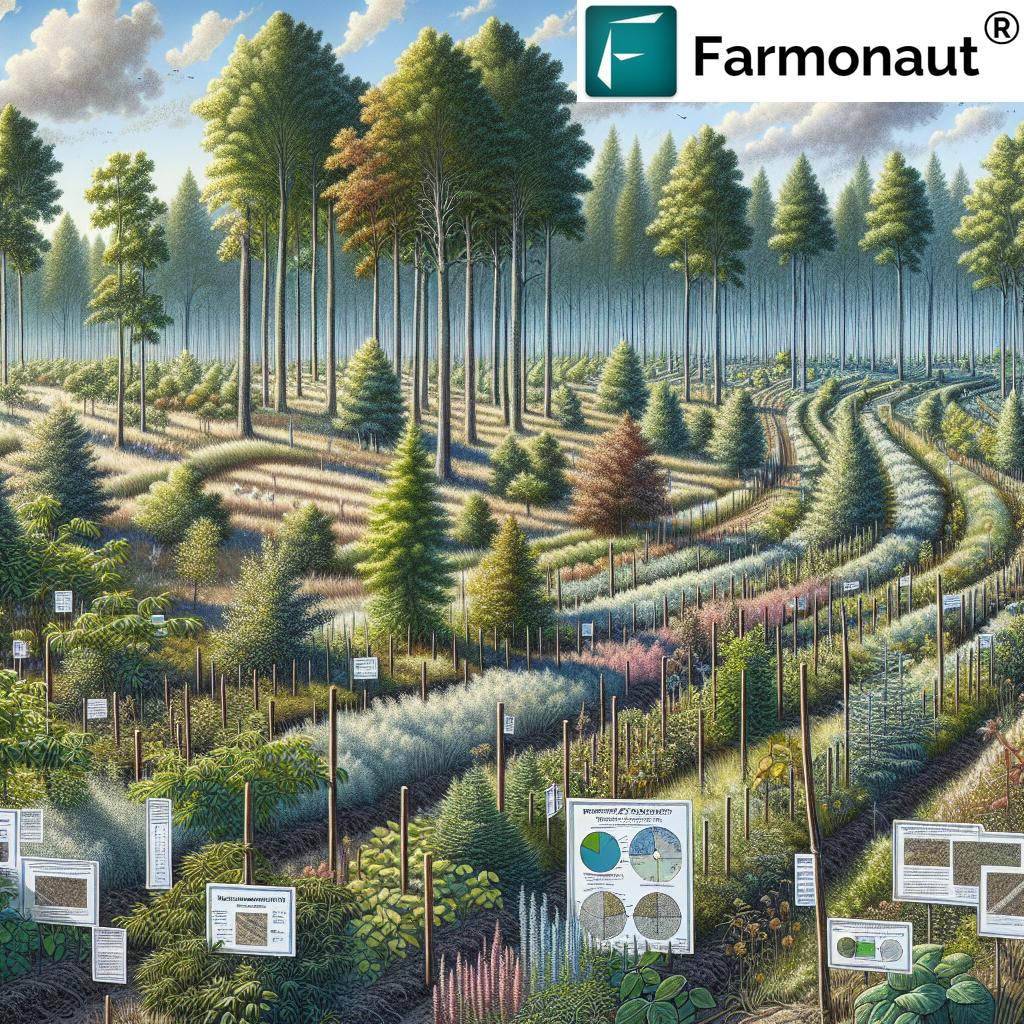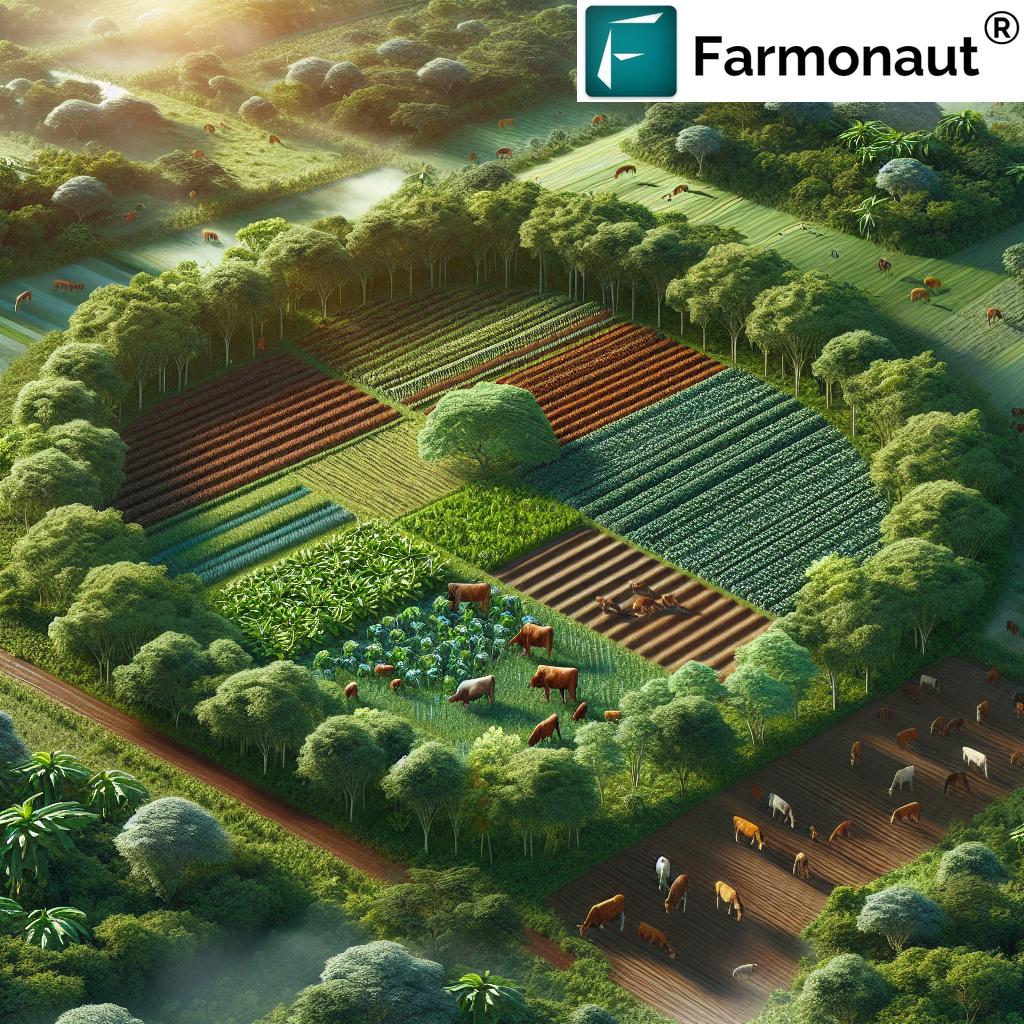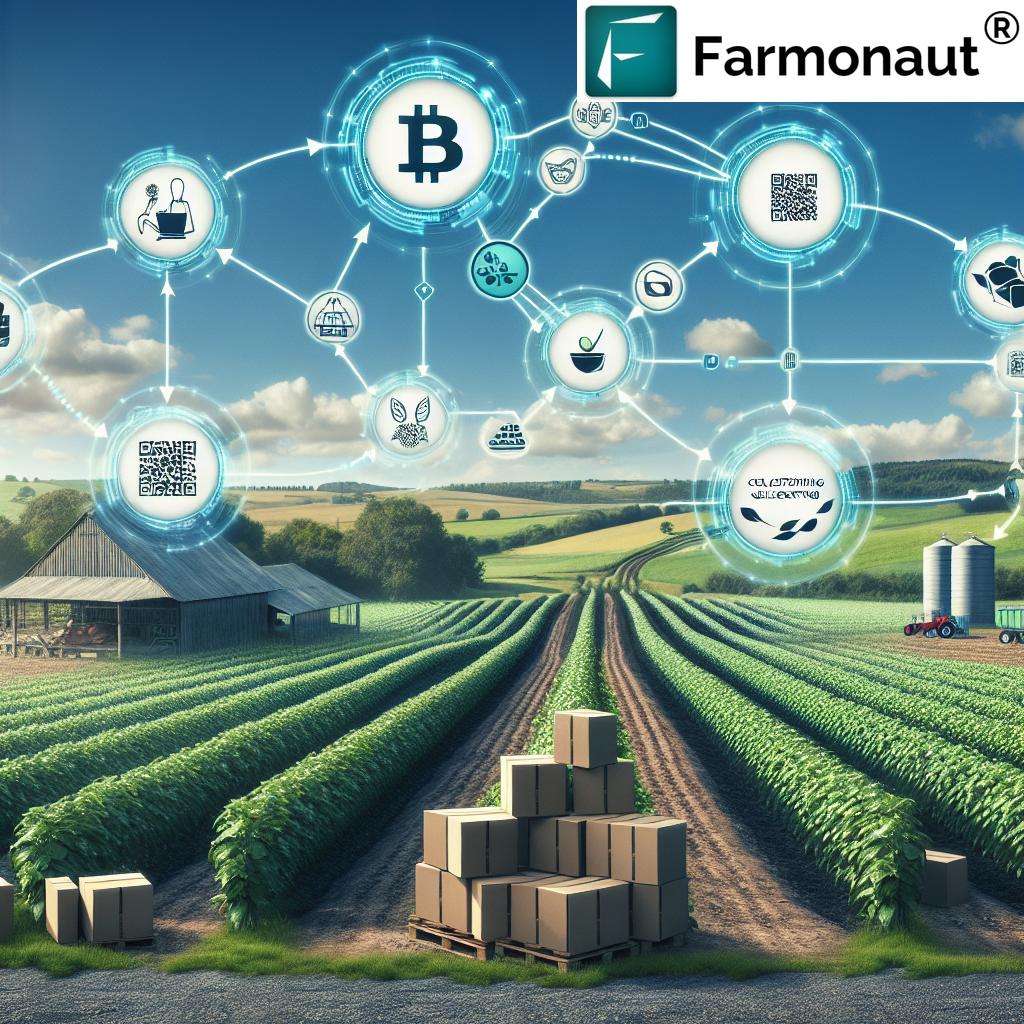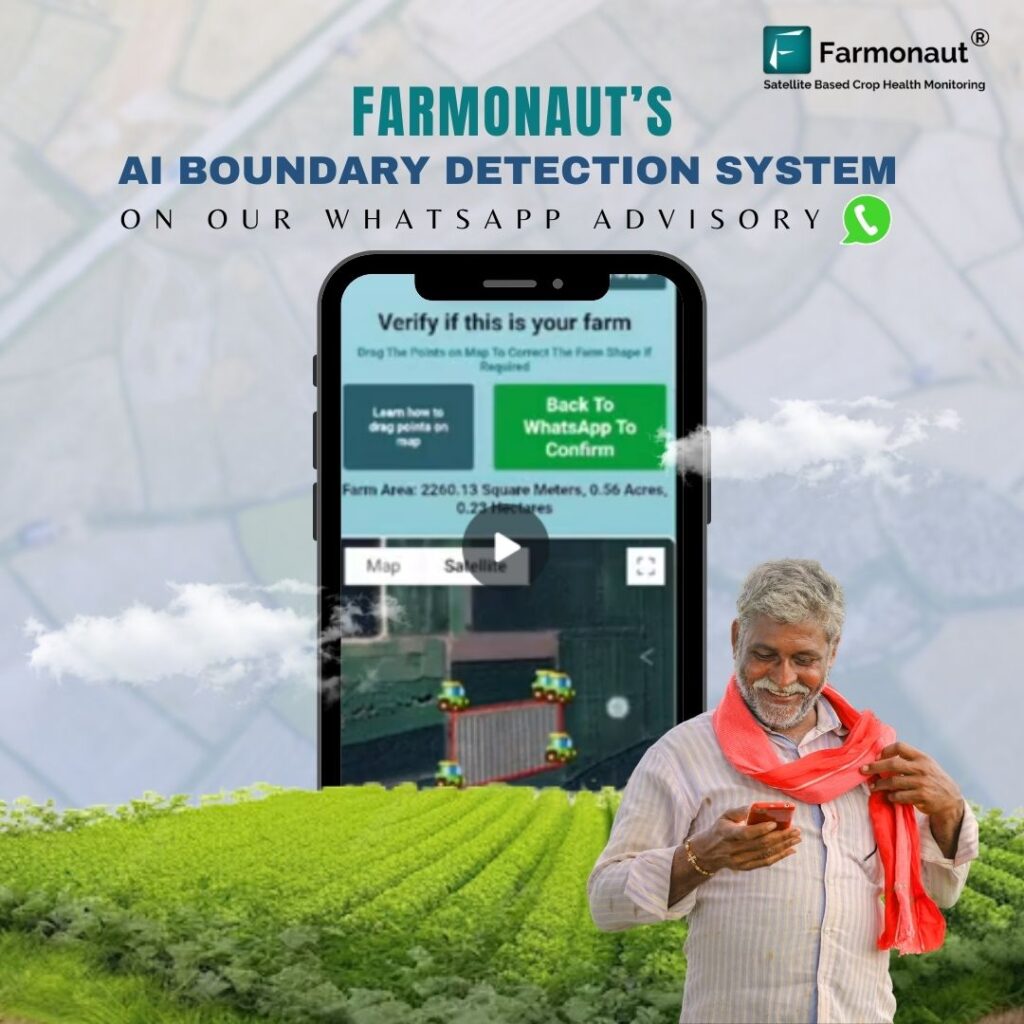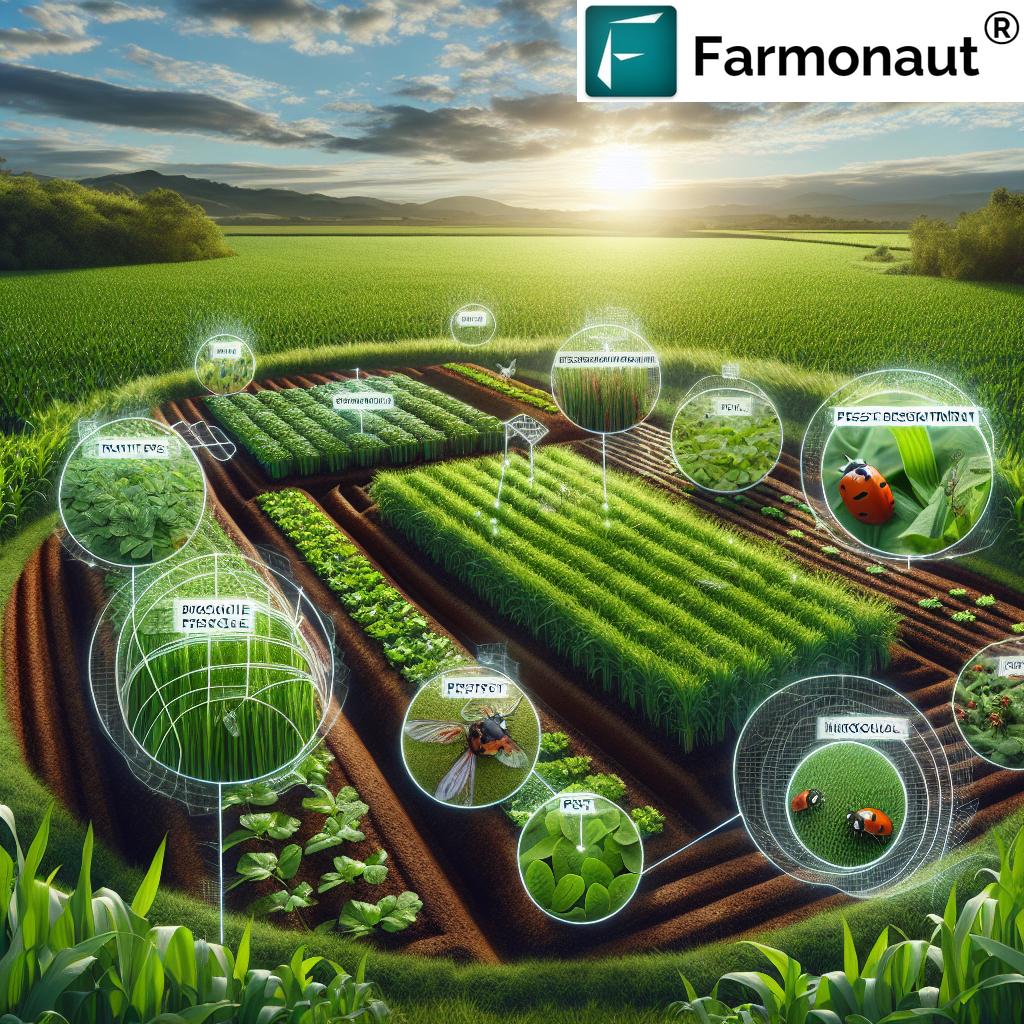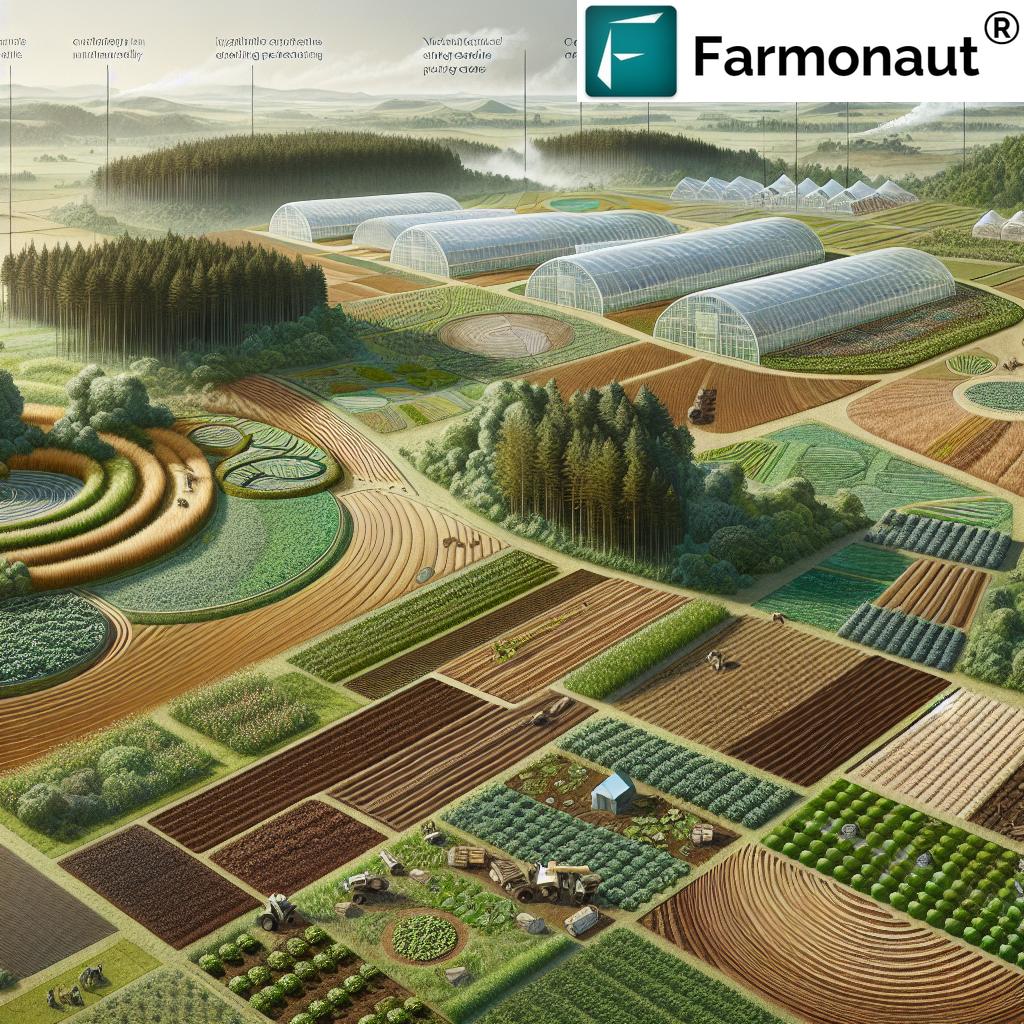Table of Contents
- Introduction
- What Is Sustainable Forestry and Why Does It Matter?
- Critical Techniques for Sustainable Forestry
- Comparative Table: Critical vs. Non-critical Forestry Techniques
- Which Technique Is NOT Critical for Sustainable Forestry?
- Farmonaut Satellite Technology & Sustainable Forestry
- Farmonaut Subscription Packages
- Frequently Asked Questions (FAQ)
- Conclusion
“Selective logging can reduce forest carbon emissions by up to 30% compared to clear-cutting methods.”
Which of the Following Is Not a Critical Technique for Sustainable Forestry?
In our rapidly changing world, sustainable forestry has evolved from a niche concept to a global imperative. As we strive to meet the resource needs of current generations without compromising the ability of future generations, the role of effective forest management practices becomes increasingly critical. But, with a myriad of techniques used globally—from selective logging techniques and agroforestry systems to prescribed fire—which approaches are truly essential for ecological forest management? And more importantly, which of the following is not a critical technique for sustainable forestry?
What Is Sustainable Forestry and Why Does It Matter?
Sustainable forestry refers to managing and using forest resources in ways that maintain their ecosystem health, biological diversity (biodiversity), and ability to generate goods and services now and in the future. It demands an integrated approach: balancing ecological integrity, economic viability, and social responsibility. Our forests provide essential functions—clean air, water, carbon storage, wildlife habitat, and timber—that must be preserved and enhanced through innovative, science-based techniques. The long-term sustainability of these ecosystems is not just a conservationist’s concern; it underpins food security, livelihoods, and resilience to climate change globally.
At Farmonaut, our commitment to sustainability and environmental innovation drives us to empower land managers and forest stewards with accurate information and digital tools for monitoring and evaluation in forestry. Let’s dive deeper into the critical techniques for sustainable forestry, learn their advantages, and see how they promote forest ecosystem resilience.
Critical Techniques for Sustainable Forestry
Effective ecological forest management depends on the right blend of science-backed methods designed to enhance forest health, support regeneration, protect soil and biodiversity, and meet community and economic needs. Below, we explore the primary methods widely recognized as critical components of sustainable forestry.
“Agroforestry systems can increase biodiversity by 20–50% compared to conventional monoculture plantations.”
Selective Logging Techniques: Maintaining Forest Structure and Function
Selective logging stands among the cornerstone sustainable forestry techniques. Instead of removing all trees from an area, we handpick specific trees for harvesting—usually based on age, species, or health criteria. This method ensures that the majority of the forest remains intact, providing essential cover for wildlife habitats, supporting natural regeneration, and minimizing ecological disruption.
- Reduces the risk of compromising ecosystem resilience
- Supports continuous forest growth and structure
- Minimizes negative impact on soil and biodiversity in forests
- Helps maintain carbon sequestration capacity, reducing emissions
Selective logging techniques are proven to cut forest carbon emissions by up to 30% compared to more destructive clear-cutting methods.
Reduced-Impact Logging (RIL): Timber Extraction with Minimal Disturbance
Reduced-impact logging (RIL) refers to a set of best forest management practices that focus on minimizing the environmental impact during timber harvesting. Key features include:
- Careful planning of harvest operations and access routes
- Using lighter equipment to decrease soil compaction and damage to residual trees
- Ensuring minimal disturbance to the forest floor and ecosystem processes
- Implementing specific measures to reduce unintentional damage during tree removal
By implementing RIL, forest managers can extract timber efficiently, while ensuring the remaining woods regenerate and the forest continues to provide essential services.
Shelterwood Cutting Method: Promoting Even-aged Regeneration
The shelterwood system involves gradually removing trees in a series of partial cuts over a period of years. This approach allows new tree generations to establish beneath the protective canopy of existing mature trees.
- Facilitates effective natural regeneration in harsh site conditions
- Ensures ongoing forest cover and protection for soil and seedlings
- Contributes to the creation of even-aged stands with diverse tree species
The shelterwood cutting method is especially useful where resilience and quick regeneration are key sustainability goals.
Continuous Cover Forestry (CCF): Sustainability Through Permanent Forest Canopy
Continuous cover forestry (CCF) emphasizes maintaining an unbroken forest canopy through approaches like selective logging, shelterwood systems, and agroforestry. The key benefits include:
- Global biodiversity conservation through reduced habitat fragmentation
- Ongoing soil protection and enhanced carbon sequestration
- Improved ecosystem services—from water regulation to climate moderation
- Flexibility to adjust management techniques for different forest conditions and regions
Variable Retention Harvesting: Enhancing Forest Resilience through Strategic Retention
Variable retention harvesting requires retaining at least 15% of the original forest stand in protected patches or scattered individual trees. By incorporating both live and dead trees, this method provides:
- Structural diversity: Mimics natural disturbance regimes
- Habitat creation: Supports a broader range of wildlife and plant species
- Promotes natural regeneration alongside planting valuable timber species
- Helps maintain key ecosystem processes and services
Prescribed Fire: Restoring and Renewing Ecosystem Health
Prescribed fire, or controlled burning, is an age-old forest management practice where fire is intentionally applied to the landscape under tightly controlled conditions.
Recognized benefits include:
- Reduces accumulation of combustible debris, which lowers wildfire risk
- Restores natural nutrient cycling and supports fire-adapted tree species
- Manages invasive species and encourages diverse plant communities
- Creates new wildlife habitats and encourages regeneration
While it must be managed with great care, prescribed fire is an essential technique in maintaining ecosystem structure and resilience in many environments.
Agroforestry Systems: Bridging Agriculture and Forest Management
Agroforestry is the practice of integrating trees and shrubs into agricultural landscapes. These agroforestry systems offer a powerful, nature-based approach to sustainability, increasing biodiversity in forests and farmlands, improving soil fertility, and providing diverse income sources for farming communities.
- Enhances soil fertility and reduces erosive forces
- Provides habitat and resources for wildlife
- Promotes sustainable agricultural practices and balanced ecosystems
- Improves economic resilience through diversification
- Reduces dependence on chemical fertilizers
According to research, integrating agroforestry systems can increase biodiversity by 20–50% compared to monoculture agriculture.
Community Involvement: Ensuring Social Sustainability and Local Stewardship
Successful sustainable forestry relies on the active participation of local communities, including indigenous peoples, in planning and implementing forest management practices.
- Incorporates traditional ecological knowledge
- Ensures equitable access to resources and benefits
- Promotes community stewardship and compliance with management plans
- Leverages social responsibility as a sustainability driver
Engaging local stakeholders leads to more culturally appropriate practices and strengthens the long-term integrity and sustainability of forest ecosystems.
Monitoring and Evaluation in Forestry: Adaptive Management for Future Generations
Robust monitoring and evaluation processes are fundamental to effective, adaptive forest management. By regularly assessing tree growth, soil health, timber yield, and biodiversity, managers can:
- Identify strengths and weaknesses in current practices
- Adjust techniques in response to climate variability and ecosystem threats
- Ensure that sustainability targets are being met
- Support forest ecosystem resilience over the long term
Effective monitoring supports accountability, transparency, and continuous improvement in all aspects of forest management.
Comparative Table: Critical vs. Non-Critical Forestry Techniques
| Technique Name | Description | Environmental Impact | Biodiversity Benefit | Soil Preservation | Relevance to Sustainable Forestry |
|---|---|---|---|---|---|
| Selective Logging | Removes specific trees based on criteria, leaving most of forest intact for health and resilience. | Low | High | High | Critical |
| Shelterwood Cutting | Gradual removal of trees to promote regeneration under the shelter of remaining trees. | Medium | Medium/High | High | Critical |
| Agroforestry | Integrates trees/shrubs into agricultural areas, fostering balanced ecosystems and resilience. | Low | High | High | Critical |
| Continuous Cover Forestry | Maintaining an unbroken canopy to ensure ecological functions, soil health, and biodiversity. | Low | High | High | Critical |
| Reduced-Impact Logging (RIL) | Eco-friendly planning and implementation of timber harvesting to minimize damage. | Low | Medium/High | High | Critical |
| Variable Retention Harvesting | Leaves pockets of trees after logging to preserve structure and aid biodiversity. | Low/Medium | High | Medium/High | Critical |
| Prescribed Fire | Controlled burning to mimic natural processes, reduce fuel loads, and restore habitats. | Low | Medium/High | Medium/High | Critical |
| Community Involvement | Integrates local and indigenous knowledge into planning and implementation. | Beneficial | High | High | Critical |
| Monitoring and Evaluation | Ongoing measurement of forest health, soil, and ecosystem response to management. | Beneficial | Medium/High | High | Critical |
| Clear-cutting | Removes all trees in an area without considering regeneration or ecosystem health. | High | Low | Low | Not Critical |
| Monoculture Planting | Establishes single-species stands, often for industrial purposes; reduces diversity. | Medium/High | Low | Low | Not Critical |
Which of the Following Is Not a Critical Technique for Sustainable Forestry?
As revealed in our comparative table, both clear-cutting and monoculture planting stand out as the non-critical techniques for sustainable forestry. Here’s why:
- Clear-cutting involves the removal of all trees in a designated area, leading to significant disruption of ecosystem processes, loss of biodiversity, increased soil erosion, and a prolonged reduction in forest resilience and the ability to recover. While efficient for short-term timber extraction, it is not compatible with the principles of sustainable forest management.
- Monoculture planting (the cultivation of only one tree species across a large area) undermines ecosystem health and biodiversity. Monocultures are vulnerable to pests, diseases, and climate variations and, as such, do not provide the ecological stability needed for long-term sustainability.
All other techniques discussed—selective logging, reduced-impact logging, shelterwood cutting, continuous cover forestry, variable retention, prescribed fire, agroforestry, community involvement, and monitoring & evaluation—are regarded as critical for achieving truly sustainable, resilient forests.
For managers and landowners committed to sustainability, avoiding clear-cutting and monoculture in favor of integrated, nature-mimicking techniques provides the best path forward.
Farmonaut’s Technology: Accelerating Sustainable Forestry and Agricultural Land Use
At Farmonaut, we believe technology is a driving force for modern, sustainable forest management. Our satellite-based crop and forest health monitoring solutions, available via Android, iOS, web, and API, empower forest owners, agroforestry practitioners, and policy-makers with accurate, actionable data to support every step of ecological forest management.
- Satellite Crop Health Monitoring: Multispectral satellite imaging provides real-time insights into forest vegetation health, soil moisture, and key ecosystem conditions—enabling precise intervention, resource optimization, and improved resilience.
- Jeevn AI Advisory System: Delivers farm or plantation-specific advice based on weather, satellite data, and best-practice forestry management recommendations—tailored to your goals for biodiversity, soil, and growth.
- Blockchain-Based Product Traceability: Ensures supply chain transparency, prevents fraud, and builds consumer trust in forest and agricultural products from origin to market.
- Fleet & Resource Management: Optimize fleet routes and resource allocation for logging, replanting, and conservation operations—saving costs while promoting sustainability.
- Carbon Footprinting: Automated tracking of emissions from forestry activities with Farmonaut Carbon Footprinting tools supports regulatory compliance and responsible forestry management.
- Large-Scale Farm & Plantation Monitoring: Our Agro-Admin platform supports collective management and monitoring for groups, cooperatives, and government agencies.
By integrating Farmonaut’s solutions, users worldwide can move beyond traditional, estimative forestry methods to a new era of data-driven sustainability and conservation.
Farmonaut Subscription Packages
Supporting sustainable forestry requires access to the latest, most accurate data. Farmonaut’s platform is available to individual users, cooperatives, businesses, and public agencies—designed to scale with your project and operational needs.
Frequently Asked Questions (FAQ): Sustainable Forestry Techniques
Q1. Why is clear-cutting not a critical technique for sustainable forestry?
Clear-cutting removes all trees in a selected area, causing significant ecosystem disruption, soil erosion, and loss of biodiversity—results that are directly contrary to the goals of sustainable forestry. Sustainable approaches prioritize maintaining forest structure and ecological function.
Q2. How can we monitor and evaluate the impact of forest management practices?
Effective monitoring and evaluation use remote sensing (such as Farmonaut’s satellite imagery), on-ground biodiversity surveys, soil analysis, and economic yield tracking. These tools let managers adapt strategies for ongoing improvement and long-term forest sustainability.
Q3. How do agroforestry systems contribute to forest ecosystem resilience?
Agroforestry systems boost biodiversity, stabilize soils, support water regulation, and reduce the risk of crop failure by diversifying income and ecological functions. They blend the best practices of agriculture and forestry for holistic sustainability.
Q4. What are the benefits of involving communities in forest management?
Community participation ensures that local and indigenous expertise shapes planning and practice. This leads to more equitable, culturally resonant, and effective management strategies, improving compliance and stewardship.
Q5. How can Farmonaut help support sustainable forestry?
Farmonaut offers satellite-driven crop and forest health monitoring, AI-based advisory, product traceability, resource management, and carbon footprinting tools—all of which empower sustainable decision-making for forest managers and landowners.
Q6. Can variable retention harvesting replace clear-cutting entirely?
While not always replacing clear-cutting in every landscape, variable retention harvesting is a much more sustainable alternative for maintaining ecological balance, promoting regeneration, and protecting biodiversity in managed forests.
Q7. What role does prescribed fire play in sustainable forestry?
Prescribed fire helps restore natural ecosystem cycles, reduce fuel build-ups, and support fire-adapted species. When managed carefully, it is a critical tool for maintaining healthy, resilient forests.
Conclusion: Building the Future of Forest Sustainability
Achieving sustainable forestry is a multidimensional effort. Our research and hands-on experience confirm that critical forest management practices—including selective logging, reduced-impact logging, shelterwood cutting, continuous cover forestry, variable retention harvesting, prescribed fire, agroforestry systems, community involvement, and consistent monitoring and evaluation—are essential for maintaining forest integrity, resilience, and productivity for generations to come.
In contrast, approaches like clear-cutting and monoculture planting fall short of true sustainability and must be avoided when long-term ecological health is the goal.
With advanced tools from Farmonaut, forest managers, policy-makers, and communities worldwide can implement best practices and adapt to changing needs—ensuring our forests continue to provide essential ecosystem services into the future. Join us in safeguarding forests and supporting sustainable land management for all.






